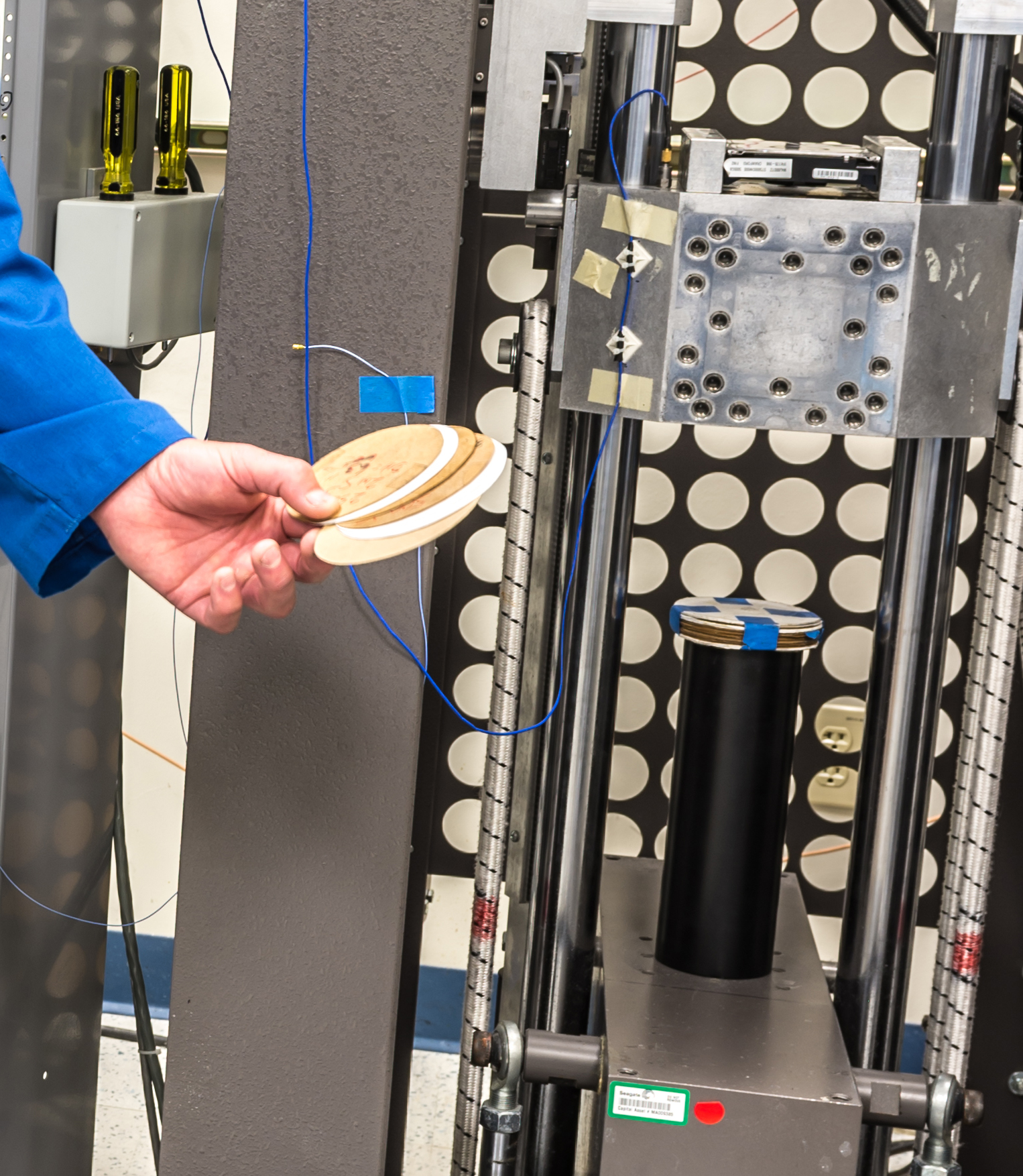How Seagate Tests Its Hard Drives
Tom's Hardware gets a rare and in-depth look at how Seagate designs and tests its hard drives. Join us for a tour through the company's Longmont, Colorado R&D center.
Drop Testing
Where you find vibe testing, shock usually doesn’t lag far behind. The basic concept of a shock test is simple: pick the drive up, drop it and measure what happens. Of course, accurate results demand accurate test machinery, and Seagate’s labs are meticulous.
One drop we watched exhibited a 600 G amplitude with a one millisecond width on the sine wave pulse. As you may recall from high school physics, if the pulse width gets shorter, such as a half- or even quarter-millisecond, that increases the frequency input, or shock amplitude, to the drive. Think of it this way: if a right hook to your jaw takes two seconds to deliver its force to your face, you’re going to be fine. If it takes a tenth of a second, you’re going to be sprawled on the floor. Features within a hard drive respond differently to different shock pulse widths.
“We have to test the drives at various pulse widths and amplitudes to make sure that we’re good at various frequencies,” explained one tech. “Because if the drive gets shocked out in the field, you're not going to get an exactly perfect pulse input. It depends on what you drop it on. Or if it’s in a system and the system gets shocked, that will change the reaction. We look at the robustness of the product in a controlled fashion at various amplitudes and pulse widths so that we can get a good idea how it will behave out in the field.”

Curiously, to control the pulse width, engineers control some of their drop parameters with these little, circular foam pads. We had to laugh, watching these excruciatingly precise tests run on equipment worth many thousands of dollars, with the key test components being something that look like drink coasters. You know you’re in the presence of die-hard engineers when…
MORE: Best SSDs For The Money
MORE: How We Test HDDs And SSDs
MORE: All Storage Content
Get Tom's Hardware's best news and in-depth reviews, straight to your inbox.
-
tom10167 Awesome photos. I don't know what the last picture is but I know I need one of those in my house.Reply -
Rookie_MIB ReplyAwesome photos. I don't know what the last picture is but I know I need one of those in my house.
That is an enterprise storage rack full of 2u hotswap chassis. 18 chassis, 12 drives per chassis = 216 drives @ 6tb (?) per drive = 1,296 terabytes or 1.3 Petabytes.
You could store a lot of TV shows or movies on that thing. Imagine how many of those are used for YouTube? Yikes. They get 300 hours of footage uploaded every minute. -
Mike-TH So if their testing is so good, why are their drives among the worst for reliability - to the point where most IT people I know actually refuse to use them, or if forced to use them will keep (and use) more spares than for other makers.Reply -
Tom20160027 The article explains the different types of drive/MTBF and why the backblaze test is useless information. Marketing plot to have folks talking about it and re-posting its link. It seems to work as we keep seeing the link over and over... They are not getting my data. They put drives designed for desktop into servers and run them to the ground and call it a "reliability test". Let's test my kids bicycle with training wheels at the Tour de France and complain about its quality....Reply
I know IT folks that refuse to use other brands of drives as well. I know IT folks that refuse to use servers from this brand or that brand. We can find anecdotal information about anything. It does not make it true. -
Glock24 Seagate tests their drives? I thought they didn't!Reply
I've had more Seagate drives die without warning than any other brand. The only ones that have survived are some old 250GB Barracuda ES. All other models I've owned had lots of bad sectors or just stopped working before the first year, but SMART almost always says the drive is fine! -
zodiacfml Yawn. All I think of right now is that HDDs will become the tape drives of the past.Reply -
Garrek99 The only drives I've ever had go bad on me were Seagate drives.Reply
Every other drive I've ever purchased simply became obsolete due to size and thus replaced.
They should be reading about how the other drive makers do their testing and learn from that. Hahaha -
rosen380 Maybe things changed... but all of my old SGI machines always had Seagate drives in them and the 20+ year old drives all still work. Hell look at what these drives *sell* for on eBay:Reply
http://www.ebay.com/sch/i.html?_sc=1&_udlo=0&_fln=1&_udhi=200&LH_Complete=1&_ssov=1&_mPrRngCbx=1&LH_Sold=1&_from=R40&_sacat=0&_nkw=%28st31200N%2C+st32171N%2C+st32272N%2C+ST34371N%2C+st34520N%2C+st34573n%2C+st39173N%2C+st318417N%2C+st52160N%29&_sop=16
4.5 GB drives *selling* for $150+ I see a 2Gb for $120.
They must have been pretty decent at some point if SGI was putting them in their $5000-20000 workstations and people are spending $40+ per GB to get these now...